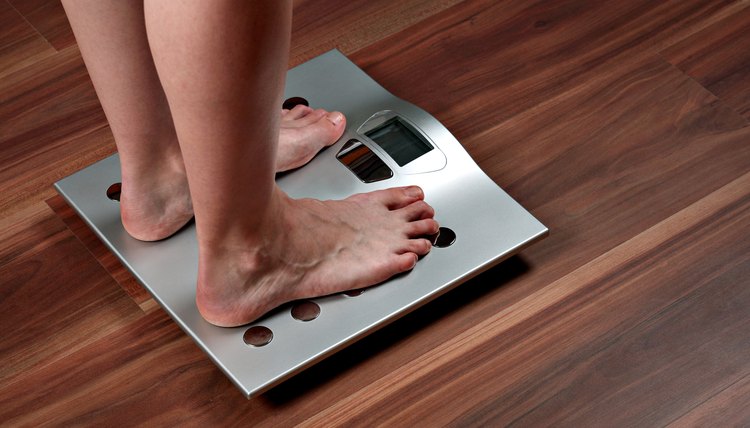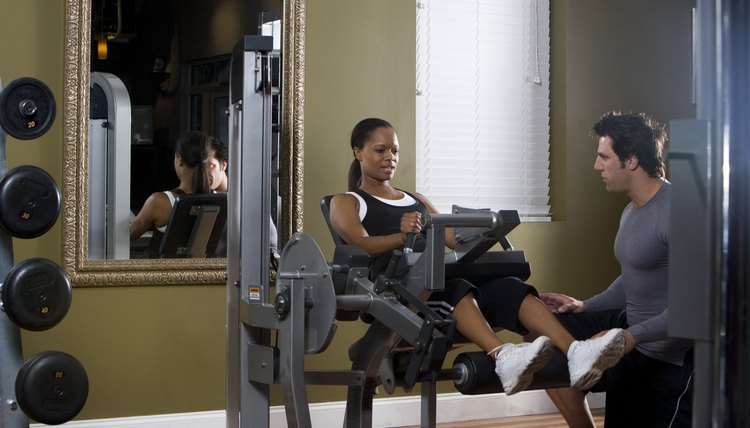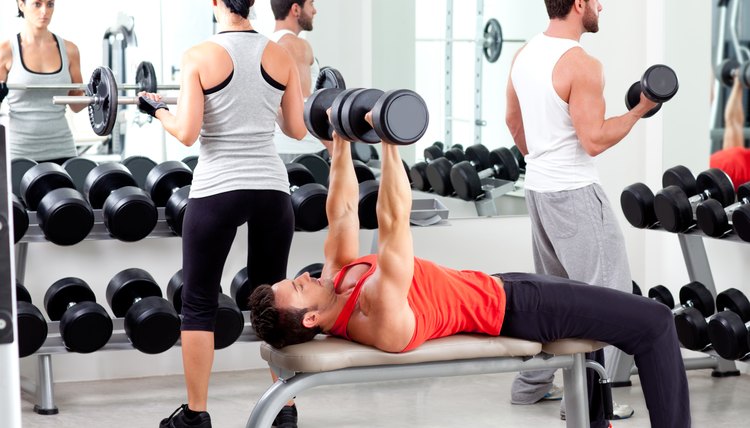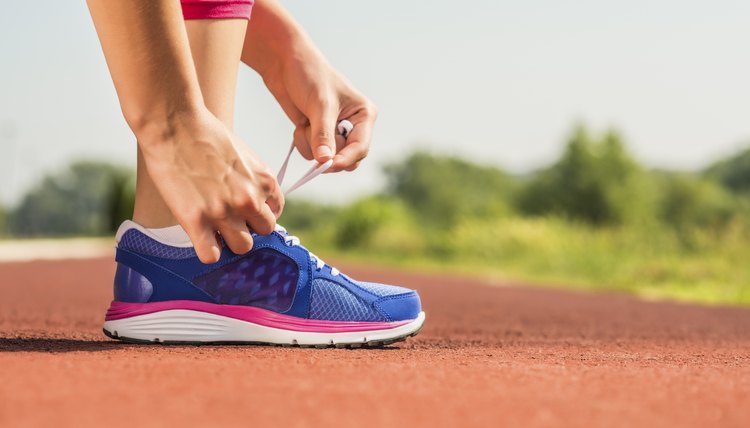What does fact checked mean?
At SportsRec, we strive to deliver objective content that is accurate and up-to-date. Our team periodically reviews articles in order to ensure content quality. The sources cited below consist of evidence from peer-reviewed journals, prominent medical organizations, academic associations, and government data.
The information contained on this site is for informational purposes only, and should not be used as a substitute for the advice of a professional health care provider. Please check with the appropriate physician regarding health questions and concerns. Although we strive to deliver accurate and up-to-date information, no guarantee to that effect is made.
Low-resistance vs. High-resistance Exercises to Lose Fat

Resistance is used to describe the work load or the force of your muscular contraction during an exercise. Typically, resistance training refers to strength-training activities like weightlifting, resistant band exercises or exercises utilizing your own body weight as resistance such as doing pushups. However, you can also change your resistance when doing some cardio exercises like increasing gear while bicycling, running uphill or using wrist and ankle weights while walking.
Fat Burning Basics

Sergey Peterman/iStock/Getty Images
Your body stores all the extra calories you eat as fat into your adipose tissue. Thus, if you are eating more calories than your body needs for energy, you will gain weight. When your body is not getting enough calories from food, it will start burning stored fat for energy. One good way to increase your body's energy demand is to exercise. The resistance you will use in your exercises will affect the amount of fat you burn.
Low- vs. High-resistance Exercises

Sergey Peterman/iStock/Getty Images
A typical way to increase your exercise resistance is to use heavier weights in your workout. This also means you will burn more calories in the same amount of time because the more weight your muscles need to move, the more energy they use. For example, walking uphill at 3.5 mph for 30 minutes will burn 354 calories for a 130-pound person. When the same person does the same exercise while carrying a 10- to 20-pound weight, the expenditure increases to 443 calories.
Resistance and Repetitions

Sergey Peterman/iStock/Getty Images
Typically, the higher your exercise resistance is, the lower your exercise duration is. For example, when you are doing high-resistance weight training, you are using heavy weights and, thus, doing fewer repetitions, whereas the opposite is true for low-resistance weightlifting exercises. The typical number of repetitions for high-resistance weight training is eight to 12 reps, and for low-resistance weight training, it is 15 to 20 reps.
Resistance and Calories

Sergey Peterman/iStock/Getty Images
In general, increasing your exercise resistance will make you burn more calories. This is because the higher your resistance is, the more muscle fibers you need to utilize and, thus, the more energy it takes to do the muscle contraction. However, while it takes less energy to contract your muscles with a lower resistance, you can perform more repetitions and exercise for longer durations, which will add up your total energy expenditure. Doing low-resistance weight training with more repetitions does not burn more fat than doing high-resistance training with lower repetitions.
Conclusion

Sergey Peterman/iStock/Getty Images
The amount of calories you burn during an exercise depends on your exercise intensity, your exercise duration and your body weight. The more calories you burn during your exercise, the more fat you will lose. High-resistance training will burn more calories than low-resistance training done for the same amount of time. If you only have time to exercise few minutes a day, you should do high-resistance and high-intensity exercises to burn more calories and optimize your fat loss.
References
- ExRx.net: Weight Training Myths
- Mul JD, Stanford KI, Hirshman MF, Goodyear LJ. Exercise and regulation of carbohydrate metabolism. Prog Mol Biol Transl Sci. 2015;135:17–37. doi:10.1016/bs.pmbts.2015.07.020
- Chiu CH, Ko MC, Wu LS, et al. Benefits of different intensity of aerobic exercise in modulating body composition among obese young adults: a pilot randomized controlled trial. Health Qual Life Outcomes. 2017;15(1):168. doi:10.1186/s12955-017-0743-4
- Calorie Control Council. Get moving calculator.
- US HHS. Activity guidelines questions and answers. Updated October 21, 2019.
- CDC. Measuring physical activity intensity. Updated January 29, 2020.
- Willis LH, Slentz CA, Bateman LA, et al. Effects of aerobic and/or resistance training on body mass and fat mass in overweight or obese adults. J Appl Physiol (1985). 2012;113(12):1831–1837. doi:10.1152/japplphysiol.01370.2011
- Carey DG. Quantifying Differences in the “Fat Burning” Zone and the Aerobic Zone: Implications For Training. Journal of Strength and Conditioning Research. 2011;25(8):1-1. doi:10.1519/jsc.0b013e3181f7c424
Writer Bio
Maria Parepalo began writing professionally in 2006 and has published in medical journals as well as online. She graduated with a bachelor’s degree in laboratory sciences from Helsinki Polytechnic in 2002 and is currently working on her doctoral degree in cell and molecular biology.
